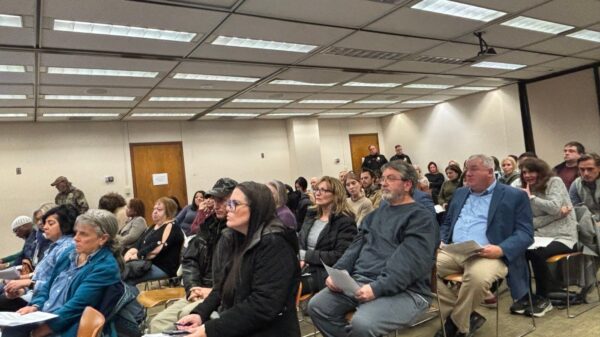The Fairfield Day Academy has become a beacon of hope for families navigating developmental challenges. Located in a quiet residential neighborhood, the academy operates from a modest ranch-style house, where innovative therapy methods are employed to assist children with various conditions. Although the treatment is not covered by Blue Cross, many families, including those from diverse backgrounds, find the support invaluable.
Dr. Bob, the academy’s only full-time staff member, has dedicated his efforts to creating a nurturing environment. While speech and physical therapists frequently visit, it is the involvement of parents that stands out. As Dr. Bob often remarks, the mothers have “less to unlearn than the professionals.” This sentiment rings true for families like Emma’s, who have seen significant improvements in their children.
Emma, a dedicated mother, has met various families at the academy, including a Black mother from Bridgeport with a son diagnosed with Down’s syndrome, and a white graduate from Smith College whose daughter faced similar challenges. The communal aspect of the academy fosters connections among parents, united by their children’s therapy journeys.
Innovative Therapy Approaches
The academy’s living room has transformed into an occupational therapy gym filled with equipment like monkey bars, weights, and patterning tables. Each morning, a group of mothers guides their children through a carefully designed circuit, culminating in a Listening Circle. Here, children listen to recordings of nature sounds, which Dr. Bob believes unlocks areas of the brain responsible for speech and language.
Emma quickly recognized the benefits for her daughter, Carla. Dr. Bob was the first medical professional to acknowledge that there were actionable steps to help Carla, who had previously struggled with mobility and communication. Through music therapy, Carla began to engage more, even composing songs for the Listening Circle. While she did not speak initially, Emma was confident that her daughter was absorbing knowledge.
To manage the costs of tuition, Emma volunteered at the academy and took on additional tasks, such as addressing envelopes. Despite her efforts, they still needed a second mortgage to cover expenses, indicating the financial sacrifices many families are willing to make for their children’s development.
On days Carla attended the academy, Emma’s other daughter, Catherine, returned home with a house key that she wore around her neck, a symbol of her growing independence at just eight years old. While Emma worried about Catherine’s feelings towards her sister, she recognized the importance of Carla’s treatment for their family’s future.
The Complexity of Family Dynamics
Catherine’s struggle to accept her sister’s condition often led to feelings of resentment. Despite reassurances from their parents and the academy staff that “there’s nothing wrong with Carla,” Catherine found it difficult to reconcile her feelings. During therapy sessions, she was encouraged to connect with Carla, but she often felt overwhelmed by negative emotions.
The dynamic between the sisters highlights the challenges families face when one child has developmental delays. Catherine’s experiences at school further complicated her feelings, especially when peers made hurtful remarks about Carla. The taunts from other children, such as those from the Muller family, became a source of shame and anger for Catherine.
To support Catherine’s emotional well-being, Emma allowed her to keep a stray cat she found, which became a project for both of them. Although her father, Jasper, initially resisted the idea of having a pet, he eventually helped Catherine name the cat, showing his support for her interests.
As Catherine navigated her complex feelings and the shifting dynamics of childhood friendships, her father instilled in her a sense of resilience. Jasper encouraged her to learn and grow, whether by teaching her to swim or ride a bike, preparing her for a life beyond Milford.
Carla’s breakthrough came after eighteen months at the academy when she finally started speaking in full sentences. Emma recalls the moment vividly: while washing dishes on a winter day, Carla tugged at her dress and asked to go outside. This marked a significant turning point, as Carla had previously refrained from speaking despite her capabilities.
With newfound communication skills, Carla was referred to a speech therapist in Bridgeport, and the family held hope that she could begin first grade in the fall of 2025.
As the family navigated these changes, they also celebrated milestones, such as Emma baking a heart-shaped cake for Valentine’s Day. Despite the struggles, she remained grateful for her supportive husband and daughters, though she sometimes felt a lingering sadness about their early marital years.
The journey of the Greene family at Fairfield Day Academy showcases the profound impact of community and innovative therapy on children with developmental challenges. As families come together to support one another, the academy stands as a testament to hope, resilience, and the power of belief in each child’s potential.







































































